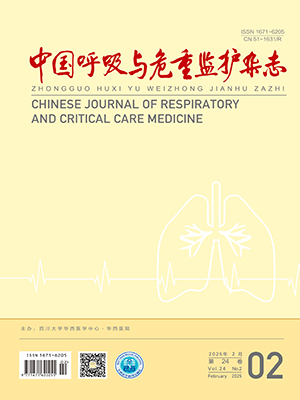| 1. |
Guan WJ, Liang WH, Zhao Y, et al. Comorbidity and its impact on 1590 patients with Covid-19 in China: a nationwide analysis. Eur Respir J, 2020, 55(5): 2000547.
|
| 2. |
Chen T, Wu D, Chen H, et al. Clinical characteristics of 113 deceased patients with coronavirus disease 2019: retrospective study. BMJ, 2020, 368: m1091.
|
| 3. |
Zhou F, Yu T, Du R, et al. Clinical course and risk factors for mortality of adult inpatients with COVID-19 in Wuhan, China: a retrospective cohort study. Lancet, 2020, 395(10229): 1054-1062.
|
| 4. |
Huang C, Wang Y, Li X, et al. Clinical features of patients infected with 2019 novel coronavirus in Wuhan, China. Lancet, 2020, 395(10223): 497-506.
|
| 5. |
Tang N, Li D, Wang X, et al. Abnormal coagulation parameters are associated with poor prognosis in patients with novel coronaviruspneumonia. J Thromb Haemost, 2020, 18(4): 844-847.
|
| 6. |
中华医学会呼吸病学分会肺栓塞与肺血管病学组, 中国医师协会呼吸医师分会肺栓塞与肺血管病工作委员会, 全国肺栓塞与肺血管病防治协作组. 肺血栓栓塞症诊治与预防指南. 中华医学杂志, 2018, 98(14): 1060-1087.
|
| 7. |
Cui S, Chen S, Li X, et al. Prevalence of venous thromboembolism in patients with severe novel coronavirus pneumonia. J Thromb Haemost, 2020, 18(6): 1421-1424.
|
| 8. |
Klok FA, Kruip MJHA, van der Meer NJM, et al. Incidence of thrombotic complications in critically ill ICU patients with COVID-19. Thromb Res, 2020, 191: 145-147.
|
| 9. |
Wichmann D, Sperhake JP, Lütgehetmann M, et al. Autopsy findings and venous thromboembolism in patients with COVID-19: a prospective cohort study. Ann Intern Med, 2020, 173(4): 268-277.
|
| 10. |
刘敏, 贺鹏, 刘辉国, 等. 30 例医务人员新型冠状病毒肺炎的临床特征分析. 中华结核和呼吸杂志, 2020, 43(3): 209-214.
|
| 11. |
Guan WJ, Ni ZY, Hu Y, et al. Clinical characteristics of coronavirus disease 2019 in China. N Engl J Med, 2020, 382(18): 1708-1720.
|
| 12. |
史振宇, 符伟国. 新型冠状病毒肺炎相关孤立性远端深静脉血栓的诊疗方案. 上海医学, 2020, 43(4): 207-210.
|
| 13. |
Weitz JI, Lensing AWA, Prins MH, et al. rivaroxaban or aspirin for extended treatment of venous thromboembolism. N Engl J Med, 2017, 376(13): 1211-1222.
|
| 14. |
Hajdenberg J. Review: In patients with cancer, prophylactic anticoagulants reduce VTE and do not increase major bleeding. Ann Intern Med, 2019, 171(12): JC65.
|
| 15. |
Tang N, Bai H, Chen X, et al. Anticoagulant treatment is associated with decreased mortality in severe coronavirus disease 2019 patients with coagulopathy. J Thromb Haemost, 2020, 18(5): 1094-1099.
|




